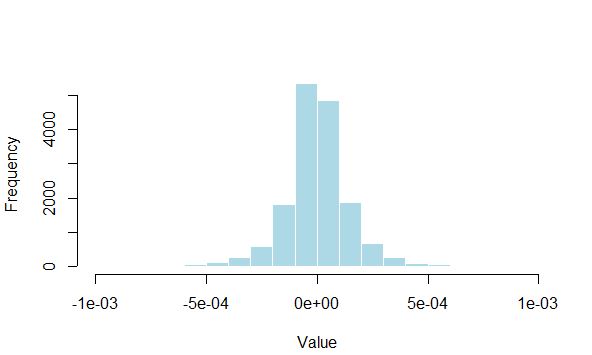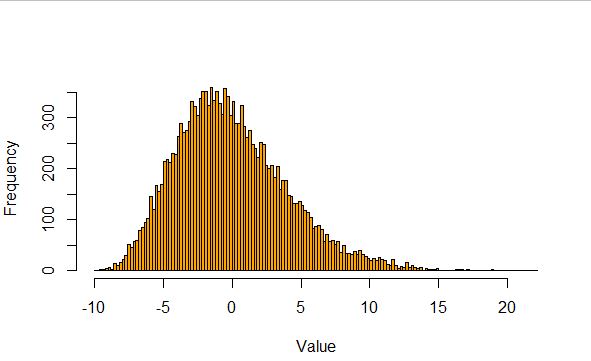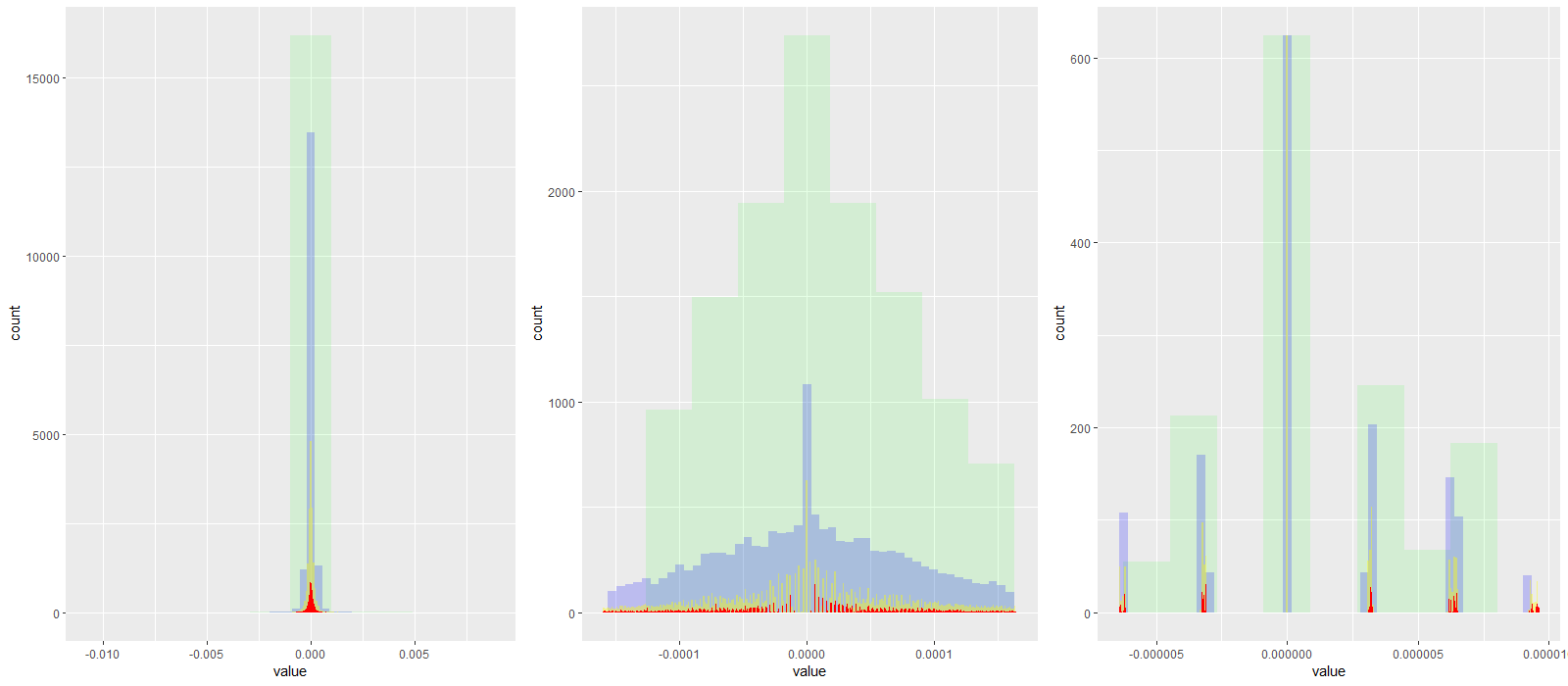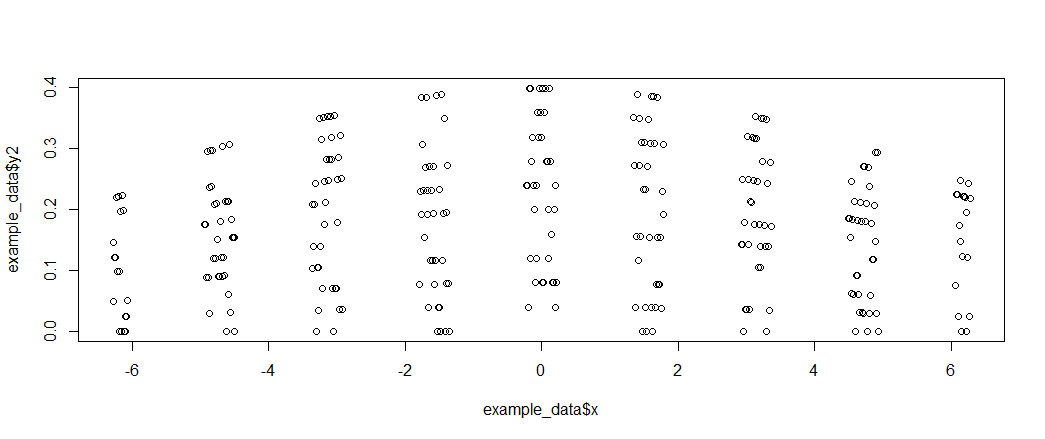Good afternoon. I have a vector 'a' containing 16000 values. I get the descriptive statistics with the help of the following:
library(pastecs)
library(timeDate)
stat.desc(a)
skewness(a)
kurtosis(a)
Especially skewness=-0.5012, kurtosis=420.8073 (1)
Then I build a histogram of my empirical data: hist(a,col="lightblue",breaks = 140, border="white",main="", xlab="Value",xlim=c(-0.001,0.001))

After this I try to fit a theoretical distribution to my empirical data. I choose Variance-Gamma distribution and try to get its parameter estimates on my data: library(VarianceGammma) a_VG<-vgFit(a)
The parameter estimates are the following: vgC=-11.7485, sigma=0.4446, theta=11.7193, nu=0.1186 (2)
Further, I create a sample from the Variance-Gamma distribution with the parameters from (2) and build a histogram of created theoretical values:
VG<-rvg(length(a),vgC=-11.7485,sigma=0.4446,theta=11.7193,nu=0.1186) hist(VG,breaks=140,col="orange",main="",xlab="Value")

But the second histogram differs absolutely from the first (empirical) histogram. Moreover, it is built on the basis of the parameters (2), which I got on the empirical data.
What's wrong with my code? How can I fix it?

